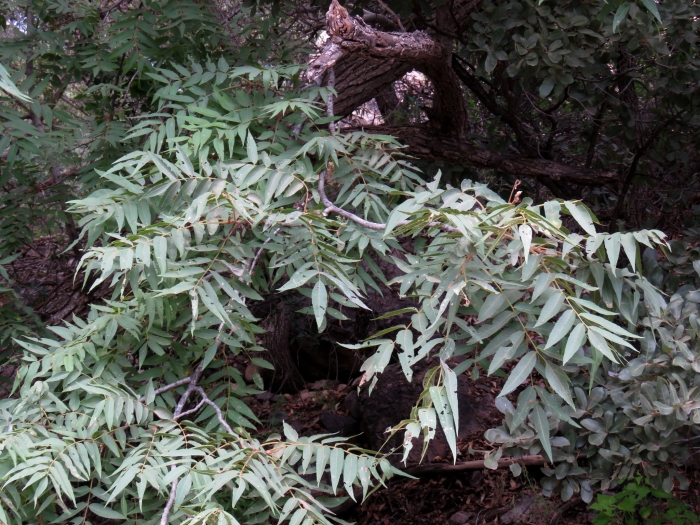Arizona Walnut
(Juglans major)
Arizona Walnut (Juglans major)
/
/

© Katja Schulz
CC BY 4.0




















































Estimated Native Range
Summary
The Arizona walnut is valued for its ability to thrive in a variety of soil conditions, from well-drained to moist, and it requires medium amounts of water. It is best grown in full sun but can tolerate partial shade. This tree is often used in naturalized plantings, as a shade tree in large landscapes, and for its edible nuts. However, it is not commonly found in urban settings due to its large size and the potential mess from fallen nuts and leaves. Gardeners should be aware that the roots can be aggressive and may interfere with nearby structures or plumbing. There are no significant disease or pest issues, but walnut trees produce a chemical called juglone, which can be toxic to certain plants grown nearby.CC BY-SA 4.0
Plant Description
- Plant Type: Tree
- Height: 30-50 feet
- Width: 30-50 feet
- Growth Rate: Slow
- Flower Color: N/A
- Flowering Season: Spring
- Leaf Retention: Deciduous
Growth Requirements
- Sun: Full Sun
- Water: Medium
- Drainage: Fast, Medium
Common Uses
Bee Garden, Bird Garden, Butterfly Garden, Deer Resistant, Edible*Disclaimer: Easyscape's listed plant edibility is for informational use. Always verify the safety and proper identification of any plant before consumption., Fragrant, Low Maintenance
Natural Habitat
Native to riparian woodlands, canyon bottoms, and moist forest clearings in the Southwestern USA and Mexico
Other Names
Common Names: Arizona Black Walnut , New Mexico Walnut , Nogal , Nogal Silvestre
Scientific Names: Juglans major , Juglans major var. major , Juglans elaeopyren , Juglans rupestris var. major , Juglans major subsp. glabrata , Juglans microcarpa subsp. major , Juglans microcarpa var. major , Juglans elaepyren
GBIF Accepted Name: Juglans major (Torr.) A.Heller